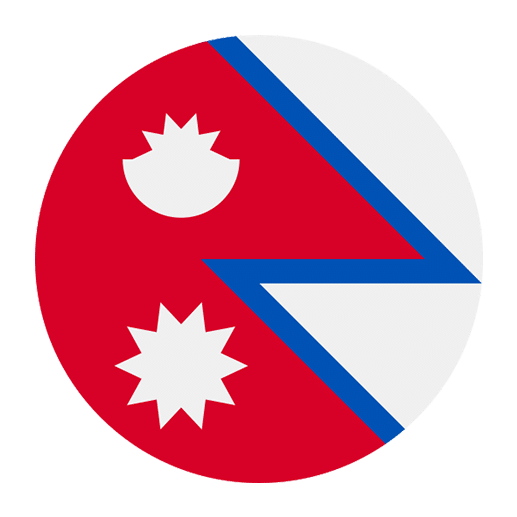Nepali, the official language of Nepal, is a language rich in cultural heritage and linguistic intricacies. As a language learner, understanding the nuances of Nepali grammar can significantly enhance your proficiency. One crucial aspect of mastering Nepali is learning about adjectives, specifically descriptive and qualitative adjectives. These adjectives add depth and detail to the language, allowing speakers to express themselves more precisely and vividly.
Understanding Adjectives in Nepali
In Nepali, adjectives are words that describe or modify nouns, giving more information about the qualities, quantity, or characteristics of the noun. Adjectives in Nepali, much like in English, can be categorized into different types, with descriptive and qualitative adjectives being two primary categories.
Descriptive Adjectives
Descriptive adjectives in Nepali provide information about the characteristics or attributes of a noun. They help in painting a clearer picture of the noun they describe. For instance, when describing a person, place, or thing, descriptive adjectives tell us more about their size, shape, color, and other qualities. Here are some examples:
– ठुलो (thulo) – big
– सानो (sano) – small
– रातो (rato) – red
– हरियो (hariyo) – green
– लामो (lamo) – long
– छोटो (chhoto) – short
Example sentences:
1. ठुलो घर (thulo ghar) – big house
2. हरियो बगैंचा (hariyo bagaincha) – green garden
3. लामो बाटो (lamo bato) – long road
Qualitative Adjectives
Qualitative adjectives in Nepali describe the inherent qualities or nature of a noun. They provide deeper insight into the noun’s characteristics that are not immediately observable. These adjectives often pertain to abstract qualities such as emotions, conditions, or states of being. Here are some examples:
– सुन्दर (sundar) – beautiful
– बुद्धिमान (buddhiman) – intelligent
– शक्तिशाली (shaktishali) – powerful
– दयालु (dayalu) – kind
– ईमानदार (imandar) – honest
Example sentences:
1. सुन्दर केटी (sundar keti) – beautiful girl
2. बुद्धिमान विद्यार्थी (buddhiman bidhyarthi) – intelligent student
3. शक्तिशाली नेता (shaktishali neta) – powerful leader
Formation and Placement of Adjectives
In Nepali, adjectives usually precede the noun they modify, similar to English. However, the placement can sometimes follow the noun, especially in poetic or emphatic contexts. Understanding the correct placement is essential for grammatical accuracy and natural expression.
Example:
1. ठुलो कुकुर (thulo kukur) – big dog
2. कुकुर ठुलो छ (kukur thulo chha) – The dog is big.
Additionally, Nepali adjectives agree with the noun they modify in terms of number and gender, though this agreement is not as strict as in some other languages. Singular and plural forms may influence the adjective’s form slightly, but gender agreement is generally more flexible.
Comparative and Superlative Forms
To compare two or more nouns, Nepali uses comparative and superlative forms of adjectives. These forms help indicate the relative degree of the quality being described.
Comparative:
– ठुलो (thulo) – big
– ठुलो भन्दा ठुलो (thulo bhanda thulo) – bigger
Superlative:
– सबैभन्दा ठुलो (sabaibhanda thulo) – biggest
Example sentences:
1. त्यो घर ठुलो छ (tyo ghar thulo chha) – That house is big.
2. यो घर त्यो घर भन्दा ठुलो छ (yo ghar tyo ghar bhanda thulo chha) – This house is bigger than that house.
3. यो सबैभन्दा ठुलो घर हो (yo sabaibhanda thulo ghar ho) – This is the biggest house.
Common Descriptive and Qualitative Adjectives
To help you get started with using descriptive and qualitative adjectives in Nepali, here is a list of some commonly used adjectives along with their meanings and example sentences:
Descriptive Adjectives:
1. मीठो (mitho) – tasty
– खाना मीठो छ (khana mitho chha) – The food is tasty.
2. नरम (naram) – soft
– नरम बिछ्यौना (naram bichhyauna) – soft mattress
3. गहिरो (gahiro) – deep
– गहिरो पोखरी (gahiro pokhari) – deep pond
4. चिसो (chiso) – cold
– चिसो पानी (chiso pani) – cold water
5. तातो (tato) – hot
– तातो चिया (tato chiya) – hot tea
Qualitative Adjectives:
1. निर्भीक (nirbhik) – fearless
– निर्भीक योद्धा (nirbhik yoddha) – fearless warrior
2. जिम्मेवार (jimmewar) – responsible
– जिम्मेवार व्यक्ति (jimmewar byakti) – responsible person
3. धैर्यवान (dhairyawan) – patient
– धैर्यवान शिक्षक (dhairyawan shikshak) – patient teacher
4. परिश्रमी (parishrami) – hardworking
– परिश्रमी किसान (parishrami kisan) – hardworking farmer
5. प्रेमिल (premil) – loving
– प्रेमिल आमा (premil aama) – loving mother
Contextual Usage of Adjectives
Adjectives in Nepali can vary in meaning and usage based on context. Understanding the cultural and situational context is crucial for using the correct adjectives. For example, the adjective सुन्दर (sundar) can describe physical beauty, but in a spiritual or poetic context, it may also convey a sense of inner beauty or purity.
Similarly, adjectives like दयालु (dayalu) not only describe someone as kind but can also imply a sense of compassion and empathy, which are highly valued traits in Nepali culture. Therefore, when learning adjectives, it is beneficial to immerse yourself in various contexts to grasp their full range of meanings.
Practice and Application
To effectively incorporate descriptive and qualitative adjectives into your Nepali vocabulary, regular practice and application are essential. Here are some tips to help you practice:
1. Create Sentences:
– Write sentences using new adjectives you learn. Start with simple sentences and gradually move to more complex ones.
– Example:
– सानो बिरालो (sano biralo) – small cat
– सुन्दर फूल (sundar phool) – beautiful flower
2. Use Flashcards:
– Create flashcards with the adjective on one side and its meaning on the other. Regularly review these flashcards to reinforce your memory.
3. Engage in Conversations:
– Practice using adjectives in conversations with native speakers or fellow learners. This will help you get comfortable with their usage in real-life contexts.
4. Read and Listen:
– Read Nepali books, articles, and listen to Nepali media to see how adjectives are used in different contexts. This exposure will enhance your understanding and usage.
5. Descriptive Writing:
– Write short paragraphs or essays describing people, places, or things using a variety of adjectives. This exercise will help you develop a richer vocabulary and improve your descriptive skills.
Challenges and Tips for Learning Adjectives
Learning adjectives in any language can come with its challenges. Here are some common challenges you might face while learning descriptive and qualitative adjectives in Nepali, along with tips to overcome them:
1. Memorization:
– Challenge: Remembering a large number of adjectives and their meanings can be daunting.
– Tip: Use mnemonic devices, associate adjectives with visual images, and practice regularly to reinforce your memory.
2. Contextual Understanding:
– Challenge: Understanding the nuances and contextual meanings of adjectives can be tricky.
– Tip: Engage with native speakers, consume Nepali media, and pay attention to how adjectives are used in different contexts to develop a better understanding.
3. Gender and Number Agreement:
– Challenge: Ensuring adjectives agree with the gender and number of the nouns they modify can be confusing.
– Tip: Practice sentence construction and pay attention to patterns in adjective-noun agreements. Over time, this will become more intuitive.
4. Pronunciation:
– Challenge: Pronouncing Nepali adjectives correctly, especially those with sounds not found in English, can be difficult.
– Tip: Listen to native speakers, use language learning apps with pronunciation guides, and practice speaking regularly to improve your pronunciation.
Conclusion
Descriptive and qualitative adjectives are essential components of the Nepali language that add richness and detail to communication. By learning these adjectives, you can express yourself more precisely and vividly, making your conversations more engaging and meaningful. Remember to practice regularly, immerse yourself in the language, and engage with native speakers to enhance your understanding and usage of Nepali adjectives. With dedication and practice, you will find yourself becoming more proficient and confident in using descriptive and qualitative adjectives in Nepali. Happy learning!

